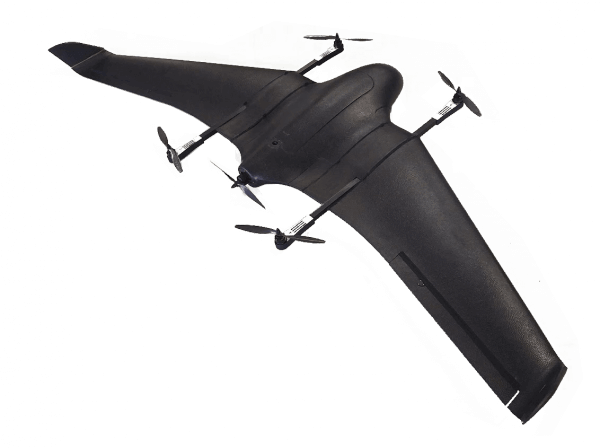Control of brushless DC motors for drones
Background
| VTOL UAV | Fixed-wing UAV |
|---|---|
 |
 |
Propellers of Unmanned aerial vehicles (UAVs)/drones tend to spin during flight even when its motor is unpowered, due to the air passing over the blades. This has some undesirable effects:
- Some Vertical-take-off-and-landing (VTOL) UAVs have four propellers that are used only for takeoff and landing. During the main mission, these only contribute to added drag. If they could be positioned in a drag-minimizing direction, this could help increase the range and flight time. One solution to this problem, by Mugin UAV and T-motor, is shown below.
- During landing, fixed-wing UAVs often turn off the motor to reduce speed and altitude, but also to minimize damage if the propeller should hit something. By aligning the propeller with the UAV fuselage, the risk of impact is significantly reduced while also reducing drag.
Electric motors used in UAVs are primarily brushless direct-current (BLDC) motors, controlled by sensorless, trapezoidal BLDC control algorithms (Bosso, Conficoni, and Tilli (2016)). By instead applying field-oriented control (FOC), the performance can be improved, while also making it possible to accurately stop the propeller in the desired position.
Scope
This project is a collaboration with Alva Industries, who make electric motors, and Maritime Robotics, who make UAVs, and seeks to improve the operational reliability and range of electric UAVs by employing field-oriented control. The end goal of this project is to implement an algorithm that can stop the UAV propeller in a desired position, to minimize aerodynamic drag and reduce the risk of impact between the propeller and other objects during landing, and to test this algorithm on a motor provided by Alva in a UAV made by Maritime Robotics.
The candidate will also be offered a payed summer job at Alva/MR prior to the project/master thesis.
Proposed tasks
- Review existing solutions in the litterature and in the industry, both specifically for this application and for the more generaltopic of field-oriented position control.
- Familiarize with existing frameworks for implementing electronic speed control (ESC), such as VESC and the nonlinear observer it is based on (Lee et al. 2009)
- Design and implement an algorithm for stopping the motor in a desired position, where a key challenge will be determining the position of the propeller.
- Conclude the work in a written report
Prerequisites
This is a list of recommended prerequisites, more to signal what it will involve than to be used as a filter on candidates.
- Strong background in C/C++ programming, as the algorithm must run in real-time at frequencies in the KHz range.
- Familiarity and interest in the problem at hand; the UAV industry and efficient ways to build and control motors
- Courses like TET4120 - Electric Drives or TET4110 - Electrical Machines will be beneficial, but not a prerequisite.
Contact
Contact supervisors Kristoffer Gryte or Jon Are Suul for more information.
References
Bosso, Alessandro, Christian Conficoni, and Andrea Tilli. 2016. “Multirotor Uav Flight Endurance and Control: The Drive Perspective.” In IECON 2016 - 42nd Annual Conference of the IEEE Industrial Electronics Society, 1839–45. Florence, Italy: IEEE. https://doi.org/10.1109/IECON.2016.7793772.
Lee, Junggi, Jinseok Hong, Kwanghee Nam, Romeo Ortega, Laurent Praly, and Alessandro Astolfi. 2009. “Sensorless Control of Surface-Mount Permanent-Magnet Synchronous Motors Based on a Nonlinear Observer.” IEEE Transactions on Power Electronics 25 (2): 290–97.

